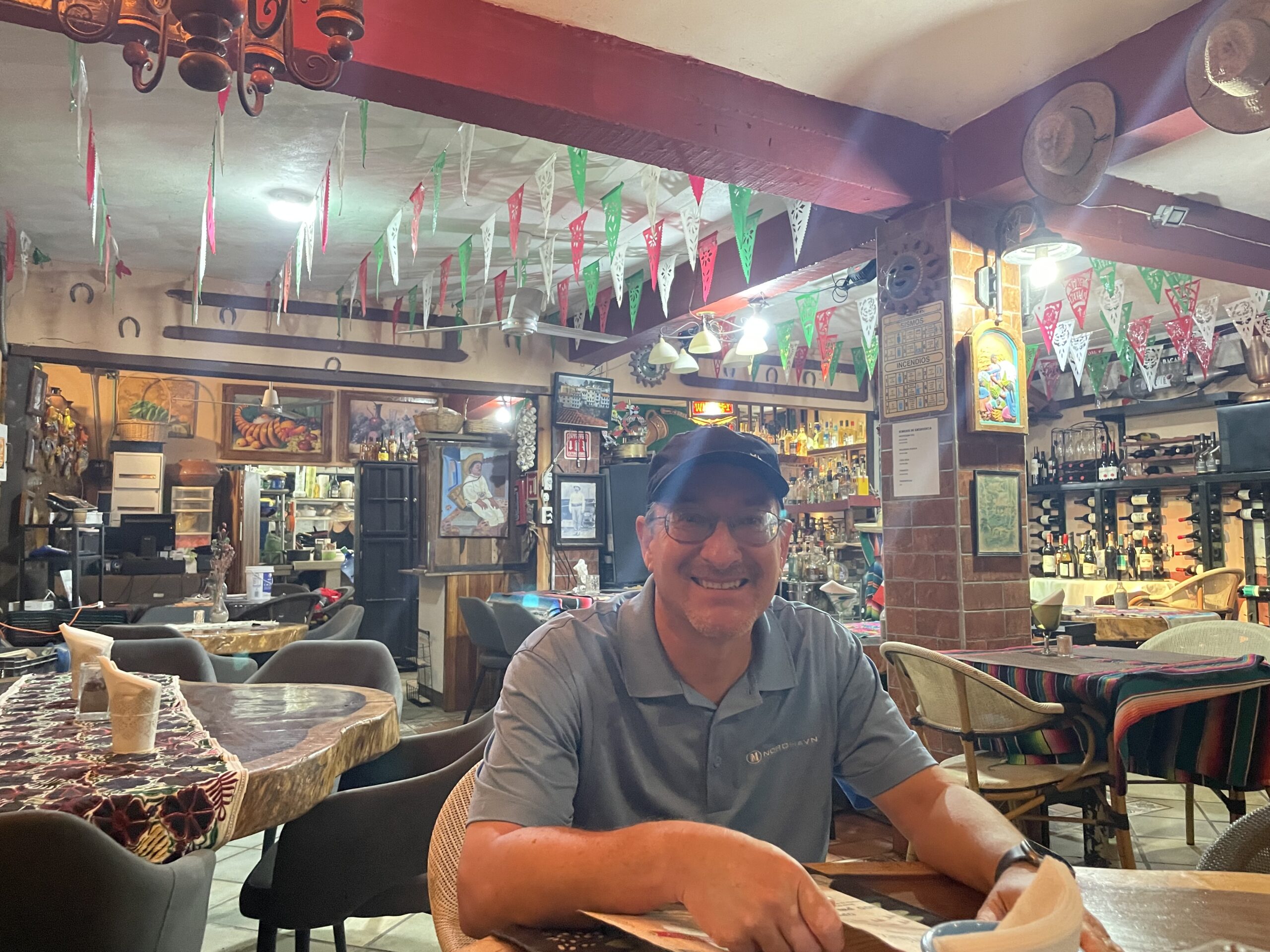Continued from yesterday… after we toured the chocolate museum and tasted the free samples, we stocked up on chocolate (chocolate is an important passage food, especially in rough seas).
We headed south to the Our Lady of Guadelupe Parish, which was a block inland. It was built in the 1930s, and probably the most unique thing about this church is that there is a crown on top of the middle tower instead of a cross. However, there are crosses on the smaller two towers that flank it on each side.


Since we had some time to kill before La Iguana opened for dinner, we decided to check out the new Naval Museum on the malecon. The admission fee was $3.00 for adults and $2.50 for students.
The majority of the museum was devoted to important moments of Mexican history where the navy was pivotal. The signs were in both English and Spanish. There were little kiosks with supplemental information all around the museum, but the kiosks were only in Spanish. We don’t know much about Mexican history, and much of the information about specific battles lacked context for us, but here is a quick overview:
The ancient Mexica and Mayan civilizations had utilized the lakes, rivers and canals for trade, and each empire had a navy of sorts to protect their respective empires. In 1521, when Spaniard Hernan Cortez seized Tenochtitlan (now Mexico City), thus conquering Mexico for Spain, he fought from Lake Texcoco using a thousand canoes and 13 brigantines.
It sounds like the first official Mexican navy was formed in 1821, with the intent of liberating themselves from Spanish rule. In 1825, liberation was achieved through a naval blockade that successfully expelled the Spaniards from Fort San Juan de Ulula.
It sounds like after independence from Spain, there were two wars with France, one which Mexico won and one which Mexico lost. Mexico was apparently under French rule for a while, though there was no mention of how they became independent again. There was also the US Mexican war that lasted from 1846 – 1848, in which the US took 55% of Mexico’s territory, including California and New Mexico. Something that we had been previously unaware of was that in 1914, US President Woodrow Wilson seized the Mexican port of Veracruz. It sounds like the seizure lasted for seven months, and that the US withdrew in response to strong protests to the occupation.
It sounds like there was also a civil war.
In addition to the historical signs, there was a room with models of the different ships utilized by the navy in different eras, a cool simulator of what it is like to drive a navy ship, and some miscellaneous information on uniforms, cartography, other vehicles utilized by the navy, and the navy’s sailing school.



After we exited the museum, we went back to the car to drive to La Iguana. It was inside a hotel called Casa Kimberly, which was located a few blocks inland, up a hill in a residential neighborhood. Casa Kimberly had once been owned by Elizabeth Taylor and Richard Burton. We were told the building was beautiful, the food was delicious, and the ocean views were stunning.
The hill was quite steep and, given how narrow the roads were, was a tad bit scary. We found parking nearby.

It was 1630. We knew the restaurant didn’t open until 1700, but we figured we’d hang out in the hotel lounge until we could go into the restaurant. The hotel was locked up like a fortress. A sign indicated the restaurant had a strict dress code, which we did not meet.

Here is a close up of the statue in the foyer, which we assume are Elizabeth Taylor and Richard Burton:

While disappointed about not being able to eat at La Iguana, we realized that maybe it was a blessing in disguise. Given how narrow and steep the one-way streets were, and how scary the drivers in Mexico could be, we were probably better off exiting the historic district before dark.
As we talked about a new dinner plan, we decided to wait to eat until we got back to La Cruz de Huanacaxtle. The next thing on our to-do list was a Costco run. The Costco was a few miles away from the historic district. The Costco in Puerto Vallarta was so similar to the ones in San Diego that we forgot we were in Mexico. And just as we tend to do at Costco in San Diego, we bought way more than we should have.
We headed back to the marina and dropped off our food. Much to our relief, we did manage to fit everything into the fridges and freezers. However, our units don’t like to be overfilled, so we’re worried about how cold the units will stay while so full.
Here is a photo of the full moon as we were approaching the marina gate with Nordhavn 63 that just arrived.

We had dinner at a restaurant called La Cava de la Martinez, located directly next door to El Ring, which had been highly recommended. The restaurant was decorated with fun and cheerful traditional Mexican bric-a-brac. The food was great.


